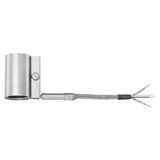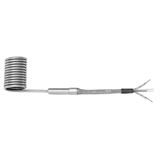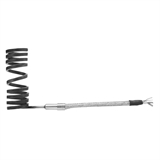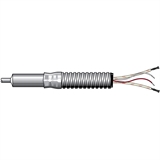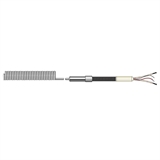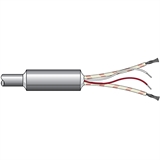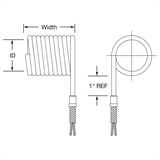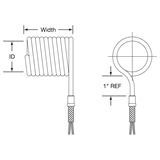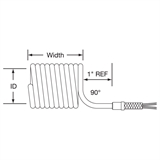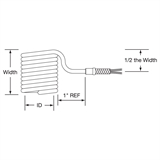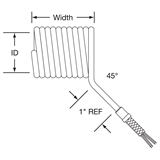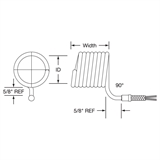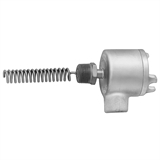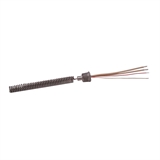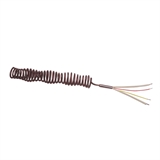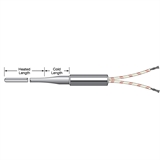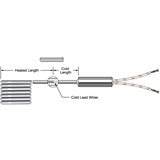Tempco Mightyband™ Coil Heaters
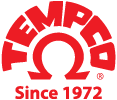
The heating source for the Mightyband heater is a resistance wire in straight form or wound into a miniature helical coil. The swaging and drawing process involved in manufacturing the heater cable for Mightyband heaters compacts the ceramic insulators that house the heating element and thermocouple wire into a solid mass, producing a rugged and durable heater cable, providing excellent thermal conductivity, dielectric strength and quick thermocouple response.
Eagle Sensors & Controls, Division of Excel Automation LLC, is an authorized Tempco distributor. Contact us for sales & technical support for Tempco heaters, Tempco sensors, Tempco temperature controllers, Tempco process heating systems & all other Tempco products.
Cable Type
Round Cable
Heating element is embedded in MgO insulation inside a round tube.
Square Cable
Heating element is embedded in MgO insulation inside a square tube. Because of the flat surface, in some applications square cable allows better heat conduction and a faster start-up time.
Rectangular Cable
Heating element is embedded in MgO insulation inside a square tube. Because of the flat surface, in some applications rectangular cable allows better heat conduction and a faster start-up time.
Standard Configurations
Clamping Straps
Mightybands normally do not require clamping straps as the inside diameter of the coil is wound undersize for a screw fit. At times because of differences in the expansion and contraction in materials a clamping strap may be required to ensure circumferential clamping forces. Clamping straps also provide additional protection of the heater coils from accidental damage. If optional clamping strap is required, specify.
Electrical Terminations
Type B: Stainless Steel Overbraid
Type B1 – Rated to 482°F (250°C)
Type B2 – Rated to 450°F (232°C)
Type B3 – Rated to 842°F (450°C)
SS overbraid protects the leads against abrasion and allows more aggressive bending, which is not possible with armor cable.
Special plugs can be attached to heater and thermocouple leads.
Type M: Plain Leads
Standard
M1 – High temperature cement potting with TGGT (Teflon® tape, fiberglass, Teflon® treated fiberglass overbraid) insulated lead wire for 482°F (250°C) and silicone sealed is standard.
Optional
M2 – High temperature epoxy potting rated 450°F (232°C) for a better moisture seal.
Optional
M3 – High temperature cement potting with MGT (mica tape, Teflon® treated fiberglass overbraid) insulated lead wire for 842°F (450°C) and silicone sealed.
Lead Orientations
Thermocouple Calibration
Type J
Built-In Type J Thermocouple
Type K
Built-In Type K Thermocouple
None
No Thermocouple needed
Additional Options
Explosion or Moisture Resistant Box
Mightyband coil heaters can be used for immersion heating and/or in-line heating of liquids, gases or air. The built-in thermocouple provides a self-contained heating unit, eliminating the need for separate thermowells, and is available with standard NPT or special fittings. The outside diameter (O.D.) of the coil must be smaller than the fitting being used for proper fit to the mating part. The wiring can be protected from hazardous environments by attaching explosion or moisture-proof boxes. Consult Tempco with your requirements.
NPT Pipe Fittings
Mightyband coil heaters can be used for immersion heating and/or in-line heating of liquids, gases or air. The built-in thermocouple provides a self-contained heating unit, eliminating the need for separate thermowells. Available with standard NPT fittings or special fittings. The outside diameter (O.D.) of the coil must be smaller than the fitting being used for proper fit to the mating part. Consult Tempco with your requirements.

